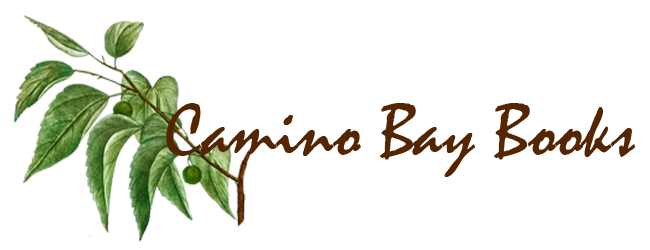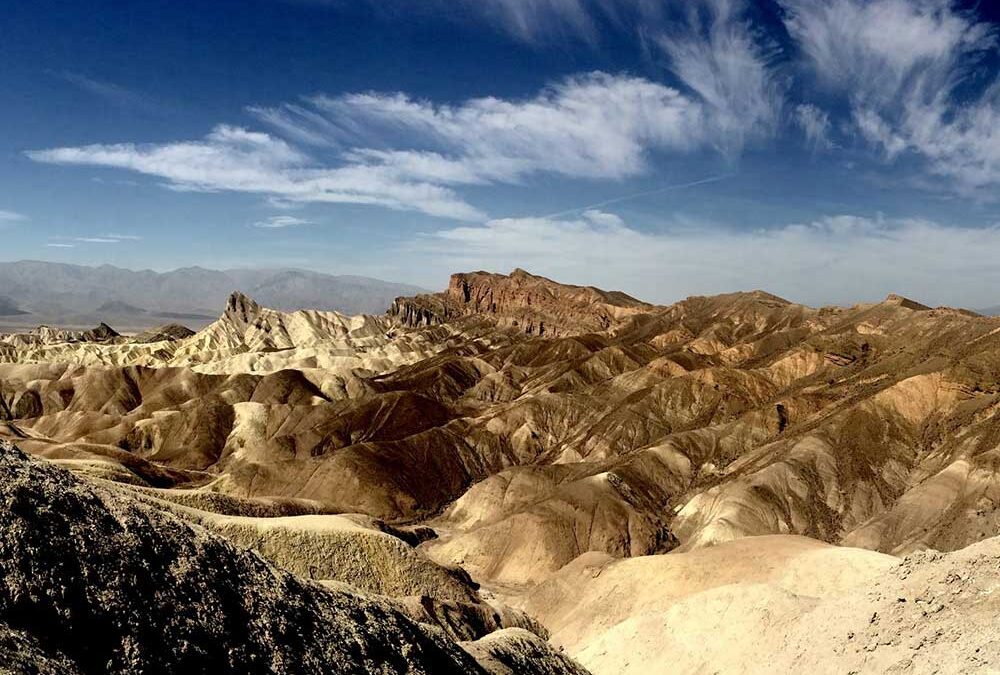Twig and I just returned from a couple mile walk into what I call the foothills of the Valley’s eastside, a landscape of strangely configured, erosionally contoured, multi-earth-toned color. I know too few words to describe what isn’t beautiful in Nature, or rather what might be beautiful in a way but that stands out for other qualities. This is one of those places. The mountains that make the Valley boundaries here hide their bounty; only when you hike up washes closer and closer to the steep slopes and cliffs do you discover the multitude of small carved valleys descending from, in this case, the Amargosa Range, out of which flow arroyos and washes headed downhill to the great bottomland valley. Some of those descending cuts create sinuous, high-sided defiles, quite unique. On its way down water shaped these foothills that I enjoy hiking among. Paths have been walked into their sides winding toward tops, some of which I take advantage of and others are so narrowly precipitous that I no longer trust my legs to manage them. Hardly anything visible grows up here but I would never call it (nor anything else Nature made, for that matter) desolate. Too much has happened here and continues to happen in a usually slow half-visible way; it’s not barren or empty, just subtle and dramatic at the same time. Today I reached the end, for me, of one of these paths, and Twig and I sat to enjoy the view. Afterward we slowly returned the way we came; I appreciate my staff at these times but rather envy her four legs. I’ve been here when it rained an inch and built a flood. Strange to imagine but not uncommon in desert landscapes. Natural behaviors out here do not seem logical or sometimes even possible to people from wetter regions. You have to pay attention and as with an eccentric friend accept its peculiarities, which is well worth the effort.
Having eaten, cleaned up, and napped I think about the reasons I leave home like I do. Camping may be chiefly to place myself in desirable locations where I can actively or passively, hiking or sitting, enjoy the sensations of love, affinity, veneration, and sheer pleasure that I find while there. Desert and mountain draw me in most decisively. I believe, along with followers of Zen, Dao, and many other ways, that we can invite and experience the truths of all places—they don’t have to be striking or unique (perhaps with the right eye all are striking or unique)—it is up to me to delve and respond. Even so, some settings speak more compellingly than others and I respond more decisively and when possible return. This is what motivated the beginnings of what has become my routine way of spending a quarter or so of the year. But there is more. Time’s subjectivity means more to our experience than what clock and calendar tell us. My body registers objective time, knows where I am in my physical transit through life. Daily camp experience, however, knows time in its other aspects: slowed, stately in a way, deliberate, felt more consciously. Unlike at home, I almost never wonder where time went; it is savored. I live longer in camp; a week is more than a week. Time is not filled and least of all killed. (I cringe when people speak of killing time and invariably tell them to be patient, time will soon enough kill them.) This is time as a friendly medium of existence. Also, in camp I find less commotion, more solitude. My routine anywhere is isolated compared to most others, but in camp it rises to a new level. Although friendly when approached, I interact with others very little and never seek them out. The rewards of sociality are not mine, which seem to come from being silently in place. Twig is all the company I need and sometimes more than I need.
Lastly, the camper; I bought a pickup camper in ’88 to serve as my traveling library/ office as I prepared for and wrote a dissertation and learned that I liked it. I used it literally to pieces over the next eighteen years (Santa Ana winds east of Los Angeles delivered the coup de grace) and bought another that I still use. I have practically the smallest available, being a believer in the sufficiency gospel. Salespeople claim there’s room for “wife and kids” but it would take a bolder man than I to chance it. Bed, toilet, small refrigerator, table, cook-stove, sink, a few cabinets, and a narrow seven foot corridor winds among these amenities. Occasionally a little extra unclaimed space would be helpful but basically it’s all I need. From its original function as office it has evolved into monk’s cell. I get far more satisfaction per cubic foot here than anywhere else; it’s a home. Saying all of this out loud, it’s a wonder I ever leave camp.
Photo by Drahomír Posteby-Mach on Unsplash


